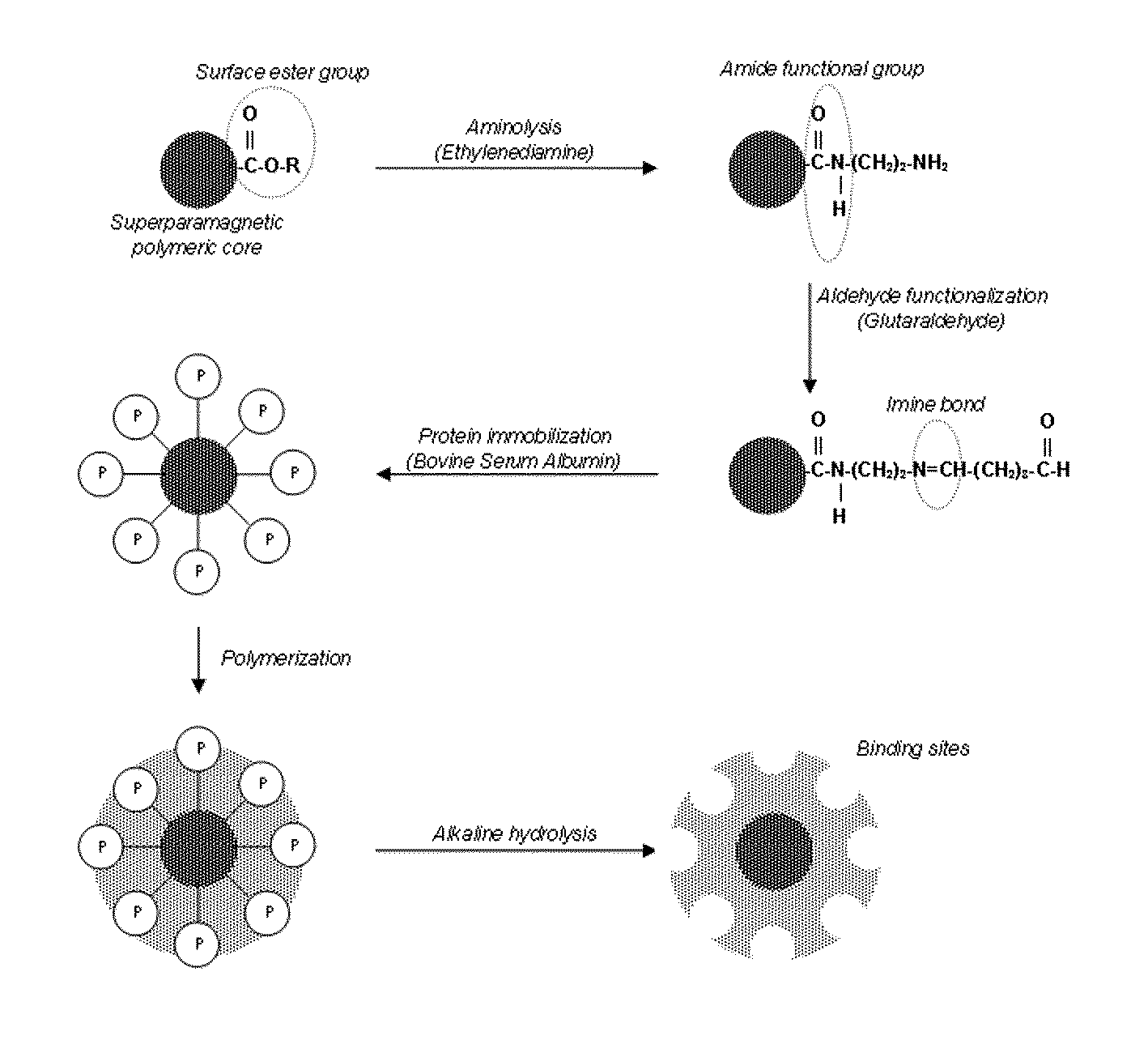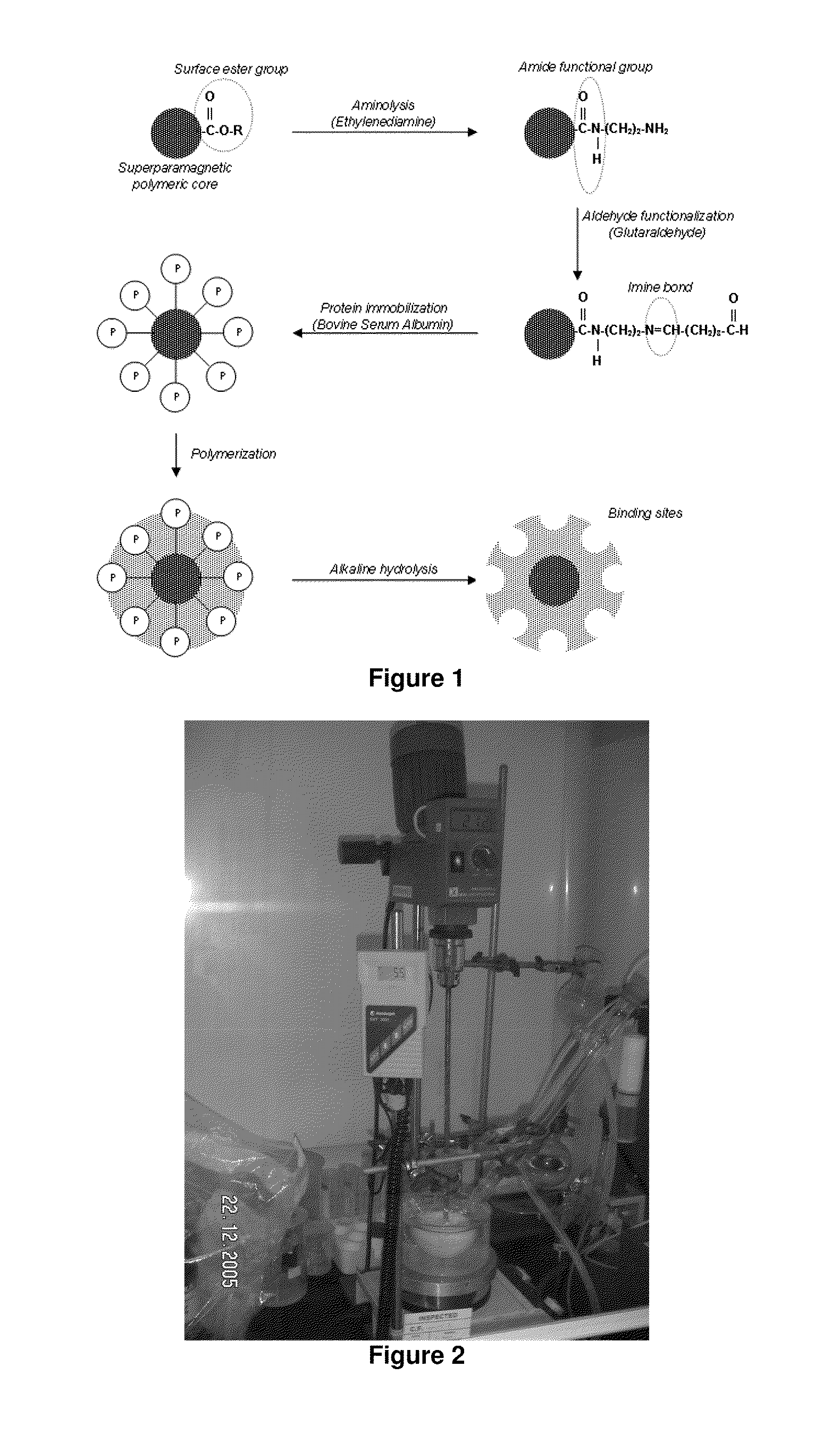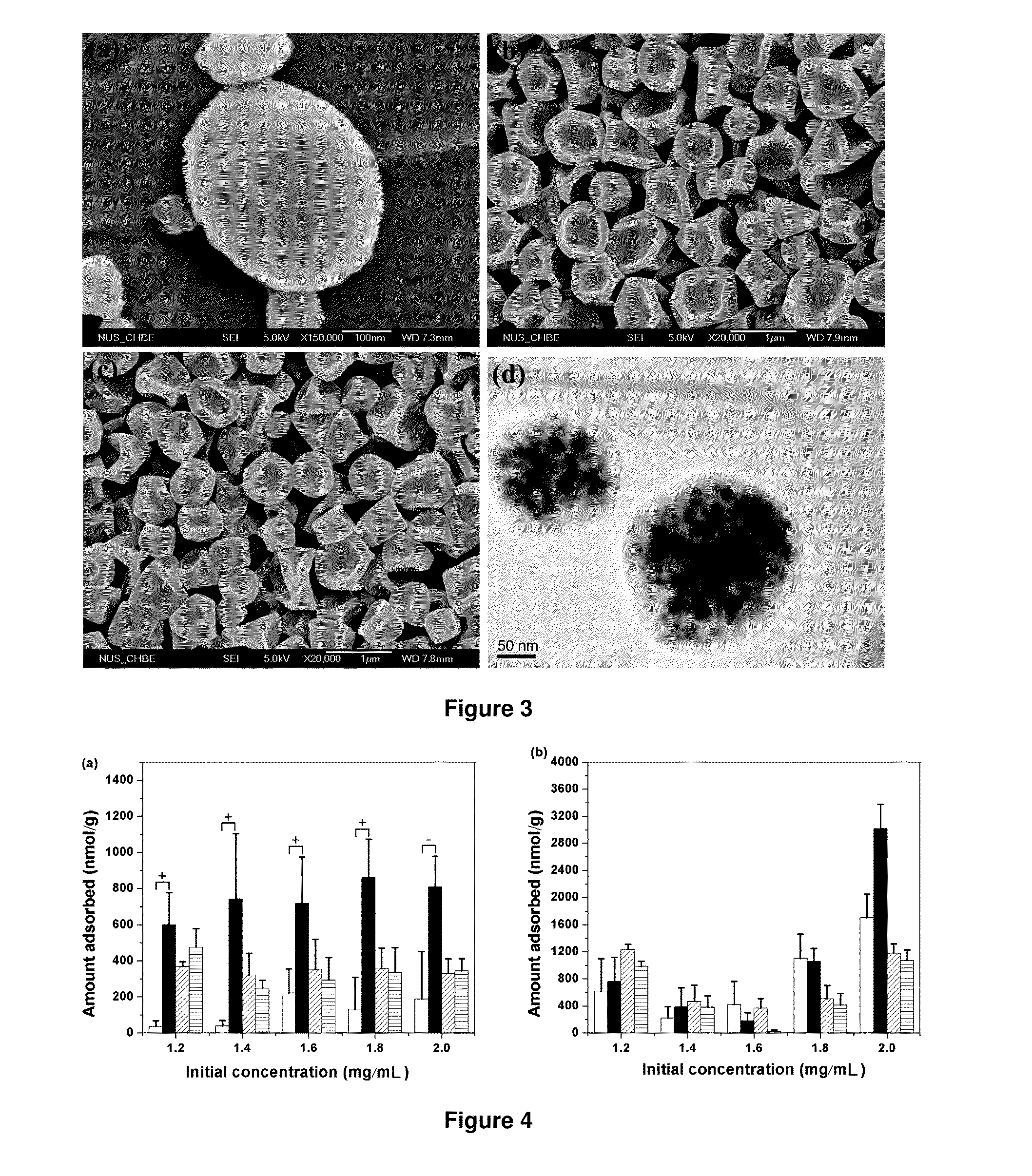Nanostructures, methods of preparing and uses thereof
a technology of nanostructures and nanostructures, applied in the direction of biochemistry apparatus and processes, material testing goods, packaging goods, etc., can solve the problems of limited success of macromolecules such as proteins, restricting the application of mips in liquid chromatography, and imprinting applications, etc., to achieve a large surface area-to-volume ratio
- Summary
- Abstract
- Description
- Claims
- Application Information
AI Technical Summary
Benefits of technology
Problems solved by technology
Method used
Image
Examples
example 1
Synthesis of the BSA Surface Imprinted Particles
[0149]BSA surface-imprinted particles had been successfully synthesized with a two-stage core-shell miniemulsion polymerization. The imprinting strategy was based on the surface immobilization of template BSA molecules with a series of surface modification of the support beads prior to polymerization (FIG. 1). The miniemulsion polymerization was carried out using the set-up as shown in FIG. 2.
Materials
[0150]Bovine serum albumin was used as the template protein, while lysozyme (Lys) from chicken egg white was used as the non-template (control) protein. Both proteins, sodium bisulfite (minimum 99%), and glutaraldehyde (50%) were purchased from Sigma. MMA (99%), EGDMA (98%), oleic acid (90%), sodium dodecyl sulfate (SDS; minimum 98.5% GC), sodium bicarbonate (99.7-100.3%), sodium bisulfite (minimum 99%), ammonium persulfate (APS, 98%), hydrochloric acid, cetyl alcohol (CA, 95%), ethylene diamine (EDA, 99%), and trifluoroacetic acid (TFA, ...
example 2
Synthesis of the Virus Imprinted Nanostructures
[0201]A virus particle is a gene transporter that contains the most basic level of nucleic acids surrounded by a protective coating known as capsid. A capsid is composed of proteins encoded by the viral genome and its shape will therefore serve as the basis for its morphological imprinting. The template virus to be used here is a simple bacteriophage (M13 containing luciferase gene infecting E. coli). Viral capsid and surface proteins will be characterized using SEM / TEM, MALDI-TOF-MS, LC-MS / MS and x-ray crystallography.
[0202]The virus imprinted nanostructures will be fabricated using a mini-emulsion polymerization system which involves the dispersion of monomers in a continuous phase and the stabilization of this dispersion by a surfactant or emulsifier. This polymerization system is known to give highly regular and mono-dispersed polymeric particles of sizes between 50-500 nm. With its high polymerization rate and superior heat dispers...
PUM
| Property | Measurement | Unit |
|---|---|---|
| concentration | aaaaa | aaaaa |
| size | aaaaa | aaaaa |
| size | aaaaa | aaaaa |
Abstract
Description
Claims
Application Information
 Login to View More
Login to View More - R&D
- Intellectual Property
- Life Sciences
- Materials
- Tech Scout
- Unparalleled Data Quality
- Higher Quality Content
- 60% Fewer Hallucinations
Browse by: Latest US Patents, China's latest patents, Technical Efficacy Thesaurus, Application Domain, Technology Topic, Popular Technical Reports.
© 2025 PatSnap. All rights reserved.Legal|Privacy policy|Modern Slavery Act Transparency Statement|Sitemap|About US| Contact US: help@patsnap.com



